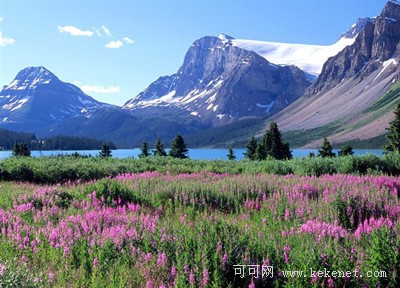在上一期的节目中,咱们大致了解了板块构造说。这个学说能够说服咱们对于落基山的来源吗?嗯,好像仍有很多的谜团解不开,那么还是得借助于考古的发现,考古中最重要的就是化石。除了菊石化石,还有什么其他化石吗?看看啰!

...remained. How did the collision of two tectonic plates at the western edge of North America cause the rise of the Rockies 500 to 1,000 miles inland?
Mountain ranges that formed on the margins of continents are pretty easy to explain, or where continents have collided. When India slams into Asia, we get the Himalayas. Where Oceanic crust dives beneath the continental margin in the northwest, the Cascades or in South America the Andes Mountains, but these mountains here, in the middle of the continent, are much harder to explain. And they've been / an enigma for decades.
Only recently, geologists have come up with a plausible theory. They suspect the Rockies formed along a line where the crust is very fragile.
What happens when the continent gets compressed, especially if there is a weak zone, or a zone that's prone to buckling? It rises. That's what's brought this granite to the surface.
Geologists now understood how the Rockies rose. And they had a date for when it happened. But what were these early mountains like? How did they compare to the mountains of today? On a site in the Rockies 70 miles northwest of Denver, geologists find a clue.
Mountains that we see here today aren't the mountains that were around millions of years ago. They are always evolving. Rivers are shifting. Peaks are shifting. It's a very dynamic process. Someone says as if mountains are alive themselves.
Miller sets out to estimate the height of the early mountains. But how can you measure something that is no longer there? Once more, fossils provide the evidence he is looking for.
What's amazing about collecting fossils is that you are really the first person to see this when you crack open a rock. It's first time it sees light again after 16 million years.
Miller has uncovered a 16-million-year-old fossilized leaf. It's from a tree that grew here just 10 million years after the Rockies began to form. And intriguingly, this leaf holds a clue to the height of these early mountains, or more precisely, it's the edges of the leaf, known as leaf margins. Botanists know that in colder temperatures the margins tend to have more teeth than leaves that grow in warmer areas.
小编有约:今天小编考考大家的发散性思维,"Mountains that we see here today aren't the mountains that were around millions of years ago. They are always evolving. Rivers are shifting. Peaks are shifting. It's a very dynamic process. Someone says as if mountains are alive themselves. " 你喜欢山吗?你有时间在山里走一走,呼吸山里的空气吗?对于最后两句你是怎样理解的?
对这段话Daisy有特殊的体会。从小生活在山边的我,对于山的变化是很敏感的。山也是有呼吸的。走在山里,那种静谧与安详的环境,人在不知不觉中就感到安定。偶尔的鸟叫,和蝴蝶的飞舞,会让人感到各种各样的生物都绚烂地活在这个世界,大自然的一切都那样的美好。所以请爱护大自然吧。这是Daisy的感想,你的呢?











